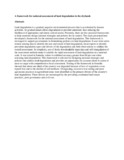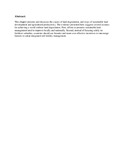Restoration of dry tropical forests in Central America: A review of pattern and process
Much information on restoration and management exists for wet tropical forests of Central America but comparatively little work has been done in the dry forests of this region. Such information is critical for reforestation efforts that are now occurring throughout Central America. This paper describes processes of degradation due to land use and provides a conceptual framework for the restoration of dry tropical forest. Most of this forest type was initially harvested for timber and then cleared for cattle in the last century (1930–1970).









